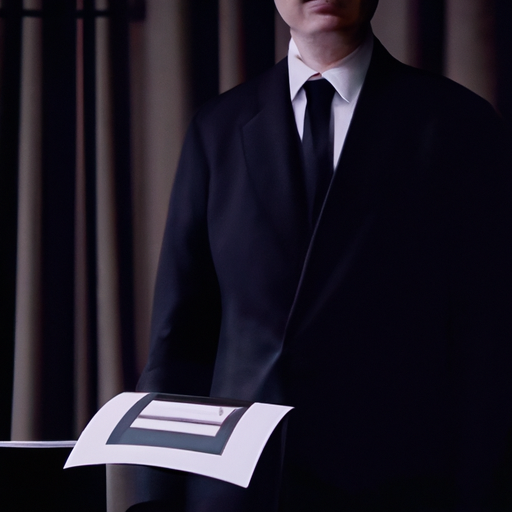
-
Table of Contents
Artful Branding: Insights from Fine Art to Logo Design

Branding is a crucial aspect of any business, as it helps create a unique identity and establishes a connection with the target audience. While many businesses focus on the visual elements of branding, such as logo design, typography, and color schemes, there is much to learn from the world of fine art. Fine art has long been revered for its ability to evoke emotions, tell stories, and leave a lasting impression. By understanding the principles and techniques used in fine art, businesses can create artful branding that resonates with their audience and sets them apart from the competition.
The Power of Emotion in Art and Branding
One of the key aspects of fine art is its ability to evoke emotions in the viewer. Whether it’s a painting, sculpture, or photograph, art has the power to make us feel joy, sadness, awe, or even anger. Similarly, effective branding should aim to evoke emotions that align with the brand’s values and message.
Take the example of Coca-Cola, a brand that has successfully used emotion in its branding for decades. The iconic Coca-Cola Christmas advertisements, featuring Santa Claus enjoying a bottle of Coke, evoke feelings of warmth, nostalgia, and happiness. By associating their brand with these positive emotions, Coca-Cola has created a strong emotional connection with its audience.
When designing a logo or creating a brand identity, businesses should consider the emotions they want to evoke in their audience. This can be achieved through the use of color psychology, typography, and imagery. For example, a healthcare brand may choose calming colors and clean, minimalist typography to evoke a sense of trust and reliability.
Storytelling through Art and Branding
Art has always been a powerful medium for storytelling. Paintings, sculptures, and other forms of art can convey narratives, ideas, and messages without the need for words. Similarly, branding can tell a story and communicate the values and mission of a business.
One example of storytelling through branding is Nike’s “Just Do It” campaign. The slogan, accompanied by powerful visuals of athletes pushing their limits, tells a story of determination, perseverance, and achievement. Nike’s branding goes beyond selling products; it inspires people to pursue their goals and overcome obstacles.
When developing a brand identity, businesses should consider the story they want to tell. What is their mission? What values do they stand for? By incorporating storytelling elements into their branding, businesses can create a deeper connection with their audience and differentiate themselves from competitors.
The Role of Creativity in Art and Logo Design
Creativity is at the heart of both fine art and logo design. Artists use their creativity to express their unique perspectives and create something that stands out. Similarly, logo designers must tap into their creativity to create a visual identity that captures the essence of a brand.
One example of a creative logo design is the FedEx logo. At first glance, it may seem like a simple design, but upon closer inspection, you’ll notice an arrow hidden between the “E” and “x.” This clever use of negative space not only makes the logo visually interesting but also conveys the brand’s message of speed and efficiency.
When designing a logo, businesses should strive for creativity and originality. A unique and memorable logo can help a brand stand out in a crowded marketplace. By thinking outside the box and exploring unconventional design elements, businesses can create a logo that captures attention and leaves a lasting impression.
Lessons from Color Theory in Art and Branding
Color plays a crucial role in both fine art and branding. Artists use color to create mood, convey meaning, and evoke emotions. Similarly, businesses can leverage color theory to create a visually appealing and impactful brand identity.
For example, the color red is often associated with energy, passion, and excitement. It is no coincidence that many fast-food chains, such as McDonald’s and KFC, use red in their branding. The color choice aligns with the fast-paced nature of their businesses and helps create a sense of urgency.
When choosing colors for branding, businesses should consider the psychological effects of different colors. Blue, for instance, is often associated with trust and reliability, making it a popular choice for financial institutions. Green, on the other hand, is associated with nature and sustainability, making it a suitable choice for eco-friendly brands.
Case Study: The Artful Branding of Apple
Apple is a prime example of a brand that has successfully incorporated artful branding into its identity. From its minimalist logo to its sleek product designs, Apple’s branding is a testament to the power of art in creating a strong brand image.
The Apple logo, a simple apple silhouette with a bite taken out of it, is instantly recognizable and has become synonymous with the brand. The logo’s simplicity and elegance reflect Apple’s commitment to clean design and user-friendly products.
Apple’s product designs also draw inspiration from the world of art. The sleek lines, minimalist aesthetics, and attention to detail in Apple’s products echo the principles of fine art. By infusing art into their branding and product design, Apple has positioned itself as a leader in innovation and style.
Key Takeaways
- Emotion plays a crucial role in both fine art and branding. Businesses should aim to evoke emotions that align with their brand’s values and message.
- Storytelling is a powerful tool in both art and branding. By incorporating storytelling elements into their branding, businesses can create a deeper connection with their audience.
- Creativity is essential in both fine art and logo design. Businesses should strive for originality and uniqueness in their branding.
- Color theory can be leveraged to create a visually appealing and impactful brand identity.
- Apple is a prime example of a brand that has successfully incorporated artful branding into its identity.
In conclusion, artful branding draws inspiration from the principles and techniques used in fine art. By understanding the power of emotion, storytelling, creativity, and color theory, businesses can create branding that resonates with their audience and sets them apart from the competition. Whether it’s through a powerful logo design, a compelling brand story, or a carefully chosen color palette, artful branding has the potential to leave a lasting impression and build a strong connection with customers.
